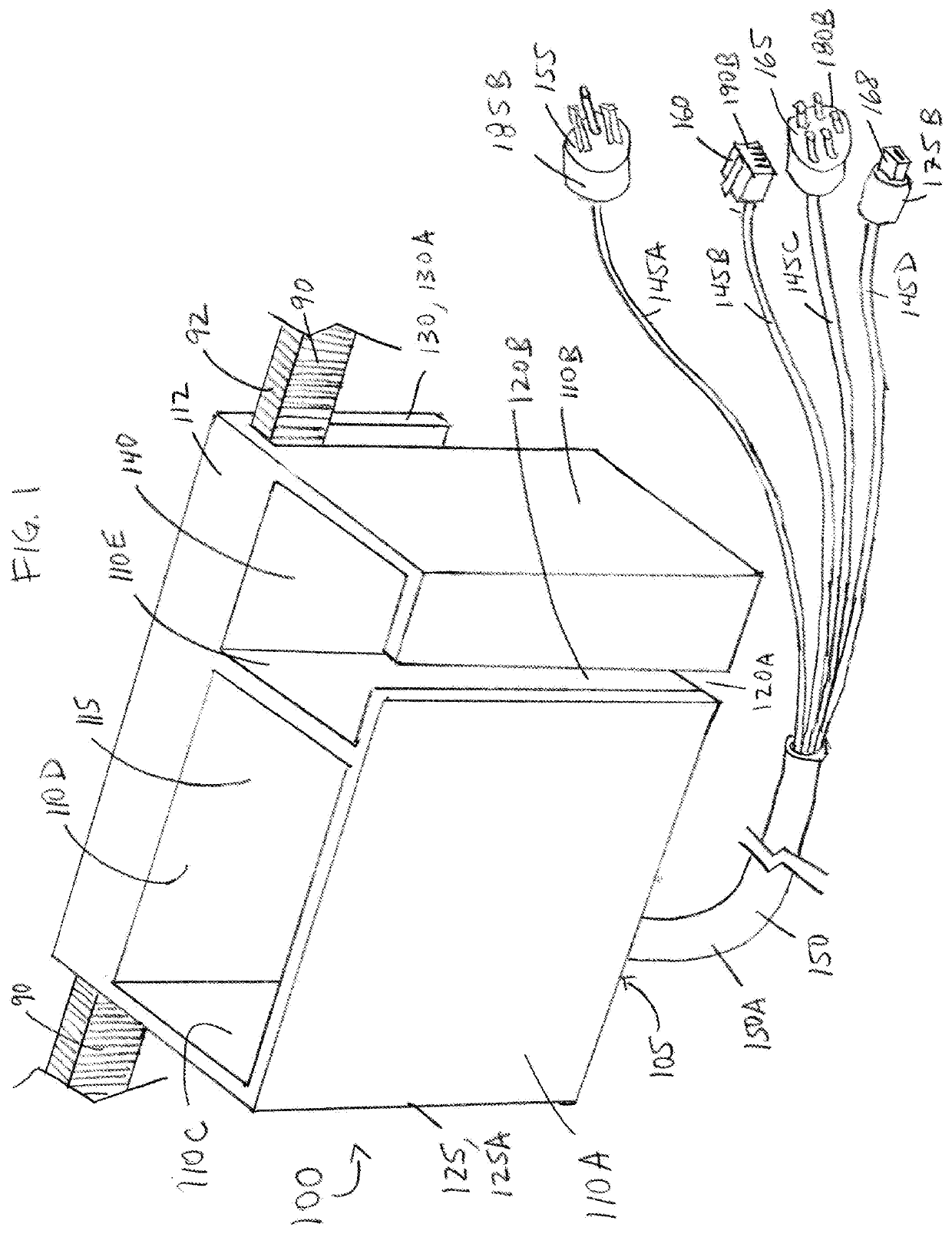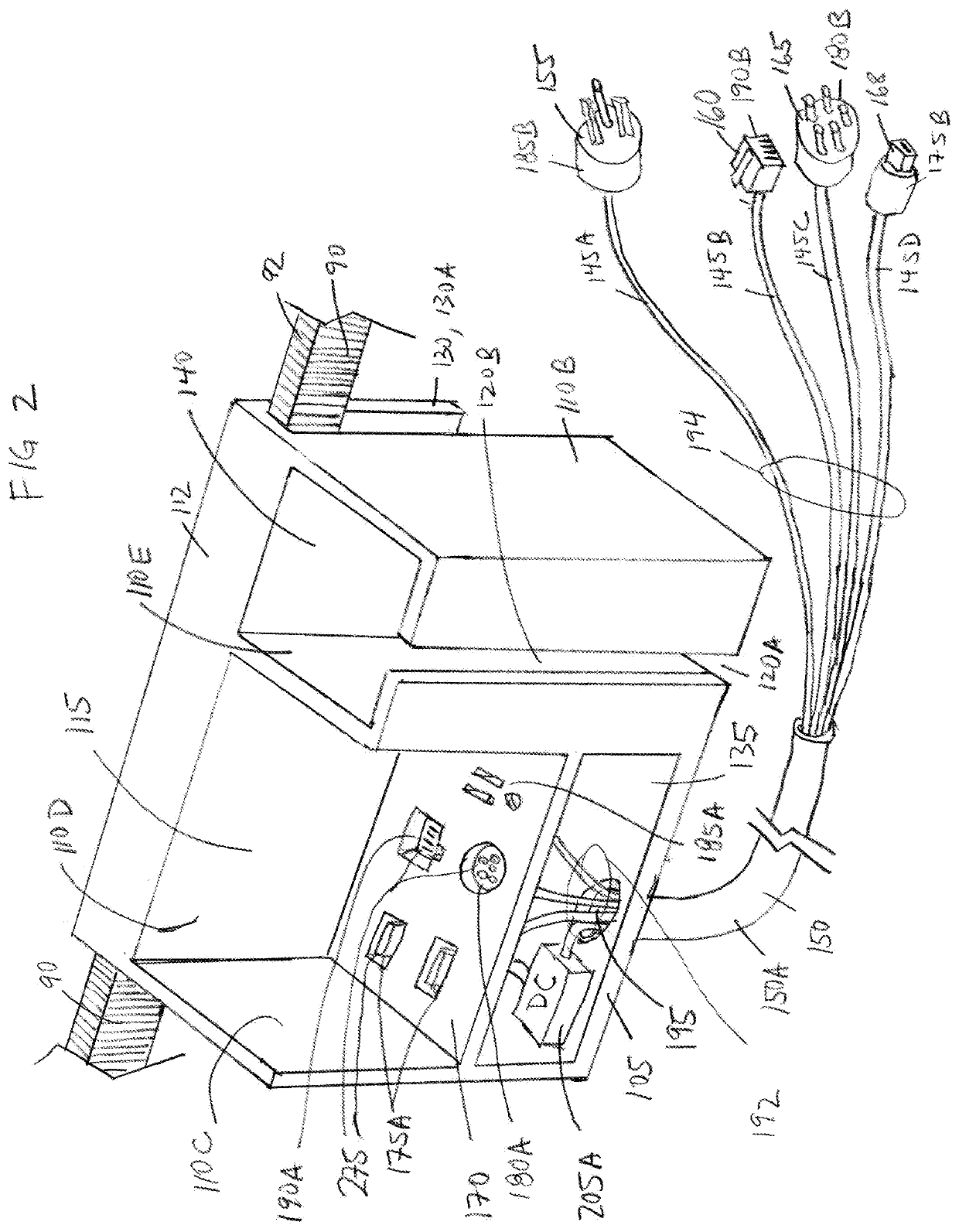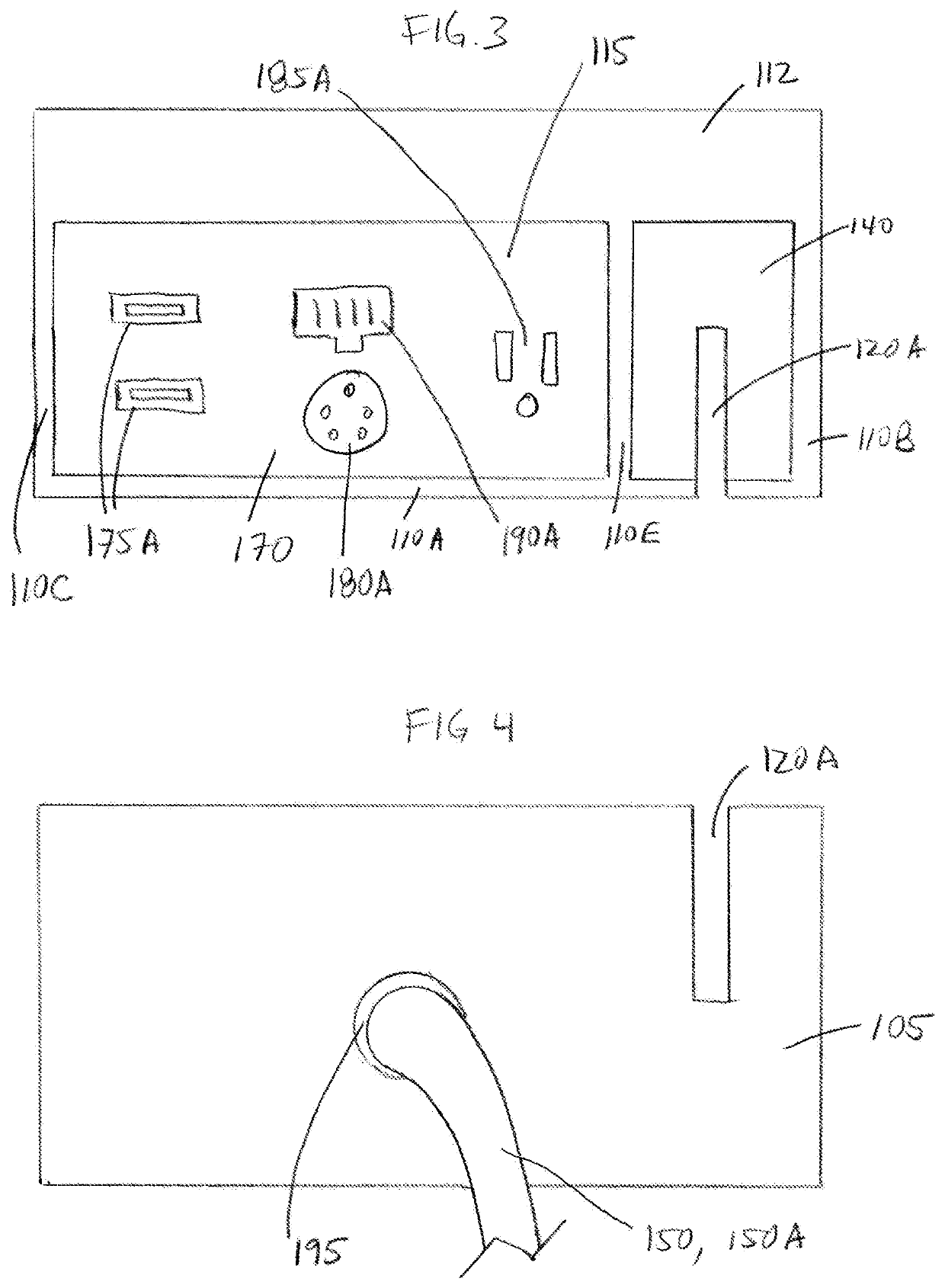Electrically Active Hospital Bed Caddy with Adjustable Mobile Device Mount and Cable Harness
a technology of mobile device mount and cable harness, which is applied in the field of bed storage caddies, can solve the problems of affecting the operation, the entanglement of multiple electrical cords from the head wall, and the lack of organization and storage of many of the devices in the hospital room
- Summary
- Abstract
- Description
- Claims
- Application Information
AI Technical Summary
Benefits of technology
Problems solved by technology
Method used
Image
Examples
first embodiment
[0043]Referring to FIGS. 1-5, a representative first embodiment of a hospital bed caddy 100 comprises a housing 125, 125A formed by a base panel (or base) 105 coupled to one or more side panels (or side walls) 110, illustrated as a front side panel 110A, lateral side panels 110B and 110C, a rear (or back) side panel 110D, and an optional side (or divider) panel 110E. The side panels 110 coupled to the base panel 105 further form a plurality of compartments 115, 135, 140, illustrated as a first, main or central compartment 115, a second, electrical compartment 135, and an optional third, side compartment 140. One or more compartments 115, 140 of the plurality of compartments 115, 135, 140, may be utilized (by the patient) for organization and storage of a wide variety of possessions, devices, other items, etc., with the second, electrical compartment 135 utilized for housing one or more electrical interfaces (or, equivalently, connectors) 175A, 180A, 185A, 190A, as discussed in great...
third embodiment
[0057]FIG. 7 is an isometric view illustrating a representative third embodiment of a hospital bed caddy 300. The hospital bed caddy 300 differs from the hospital bed caddy 100 insofar as the hospital bed caddy 300 includes an optional fourth compartment 250 formed using an additional side (or divider) panel 110F, and further comprises an extension arm 215 with a mobile device mount 225, with the extension arm 215 illustrated in an extended position in FIG. 7. The extension arm 215 has multiple, jointed (or hinged) segments 226, 228 as illustrated (using joints or hinges 242, 244, along with the pivot coupling or mount 220), to allow for compact folding of the extension arm (as illustrated in FIG. 11) and extending of the extension arm 215 (as illustrated in FIGS. 7 and 13) to reach from the housing 125C to a patient seated or lying in the hospital bed. Any suitable joints or hinges 242, 244 may be utilized for the extension arm 215. A first end 222 of the extension arm 215 is coupl...
fourth embodiment
[0061]FIG. 8 is an isometric view illustrating a representative fourth embodiment of a hospital bed caddy 400. The hospital bed caddy 400 also differs from the hospital bed caddy 100 insofar as the hospital bed caddy 400 includes an optional fourth compartment 250 formed using an additional side (or divider) panel 110F. The hospital bed caddy 400 further differs from the hospital bed caddy 100 insofar as: (1) one or more lids 230 are provided to cover a corresponding compartment (e.g., covering compartment 250), with a representative lid 230 rotatably coupled to the housing 125D using a hinge 232; and (2) one or more of the base panel 105 (not separately illustrated) and / or side panels 110M, 110N further include a plurality of perforations (or holes) 235, such as to provide additional or greater airflow within one or more of the compartments 115, 140, 250. These perforations (or holes) 235 may be helpful in dissipating any condensation which may form around contents held in the hosp...
PUM
 Login to View More
Login to View More Abstract
Description
Claims
Application Information
 Login to View More
Login to View More - R&D
- Intellectual Property
- Life Sciences
- Materials
- Tech Scout
- Unparalleled Data Quality
- Higher Quality Content
- 60% Fewer Hallucinations
Browse by: Latest US Patents, China's latest patents, Technical Efficacy Thesaurus, Application Domain, Technology Topic, Popular Technical Reports.
© 2025 PatSnap. All rights reserved.Legal|Privacy policy|Modern Slavery Act Transparency Statement|Sitemap|About US| Contact US: help@patsnap.com



